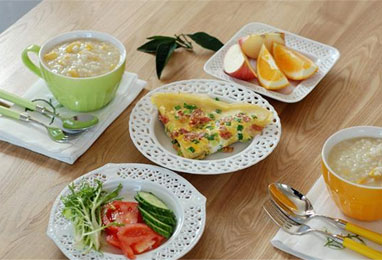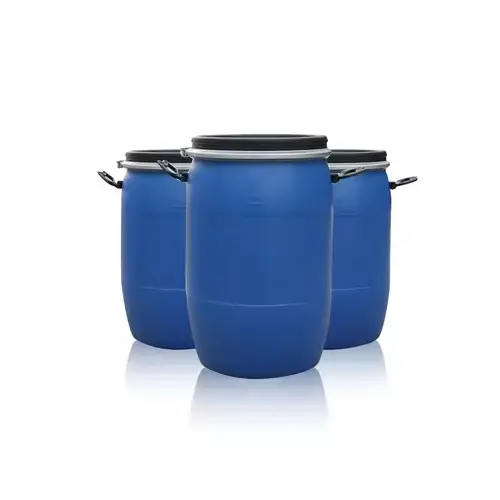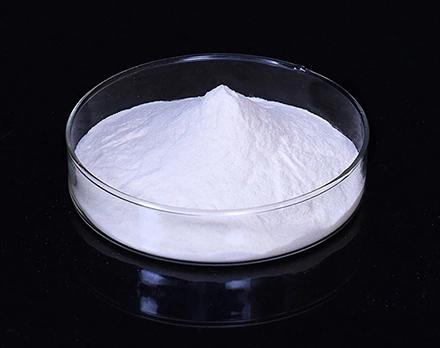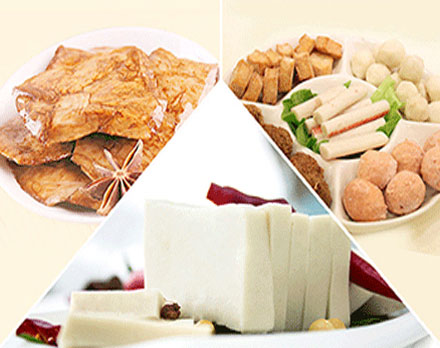Application of Maltitol in Sugar-free Candies
Application of Maltitol in Sugar-free Candies
Maltitol has a series of characteristics that allow it to directly replace sucrose and produce a variety of sugar-free foods without changing the process or formula.
With the shift of people's dietary structure towards low calories, low fat and low sugar, sugar-free candies came into being. In the early 1970s, a sugar-free chewing gum was first introduced to the US market. After nearly 30 years of development, the sales volume of sugar-free chewing gum has increased significantly. This successful attempt has effectively promoted the development of sugar-free candies. Since then, a new group has emerged in the candy family - sugar-free candies.
The so-called sugar-free candies, in a more traditional way, are: candies made of sugar that does not cause tooth decay, with more than 13 calories less than conventional candies but the same other nutrients.
Sugar-free candies are developing rapidly in the European, American and Japanese markets, with average sales reaching about 30% of the total candy sales, and there are also rich varieties. Sugar-free candies have become a consumer hotspot and development focus in the current international candy market. Its main raw material can be maltitol, and maltitol has the characteristics of not raising blood sugar, low calorific value, and preventing tooth decay. It is particularly suitable for diabetic and obese patients, as well as children, women and other consumers. Here are some sugar-free candy recipes:
Sugar-free hard candy reference recipe: powdered maltitol 98.52%, lemon 0.7%, edible flavor 0.6%, edible coloring 0.06%. First, heat the powdered maltitol and coloring together to 171°C, then place the sugar in a vacuum device for 5 minutes, and then cool the sugar to a certain plasticity, add citric acid and flavors in turn and knead evenly, finally cut into shape, cool and package, and place in a sealed container.
Sugar-free milk hard candy recipe: powdered maltitol 63.2%, purified water 15.17%, concentrated light milk 17.7%, vegetable oil 3.8%, monoglyceride 0.05%, edible flavor 0.08%. During the sugar boiling process, maltitol and water are first heated to 130℃-135℃, stirred continuously, and milk is added at 125℃, and vacuumed for 5 minutes. When the temperature of the sugar solution drops to 90℃-100℃ after being taken out of the pot, vegetable oils, emulsifiers and flavors are added, and then the conventional candy production process is entered. It should be noted that when adding milk and vegetable oils, the boiling time and temperature should be controlled, and the moisture content of the final product should be less than 2%.
The sweetness of maltitol is 80%-90% of sucrose, and candies made with maltitol taste better than other "non-sucrose" candies. Candies containing maltitol have a refreshing and cool taste, and their sweetness is pure and has no bad aftertaste.
Due to its special molecular structure, the Maillard browning reaction will not occur, so the color of the sugar body is stable when boiling sugar, and it can withstand the high temperature during boiling and is not easy to decompose. Maltitol is not easily fermented and utilized by streptococcal mutants in the mouth, which inhibits the growth of bacteria in the mouth and effectively prevents the occurrence of tooth caries.
Therefore, maltitol, as the main ingredient of sugar-free candies, is very popular in Europe, the United States, Japan and other countries. It is one of the most popular health foods in the world today and has broader development prospects in the Chinese market.
-
Inulin
-
Polydextrose
-
Resistant Dextrin
- Trehalose
- Resistant Dextrin(Soluble Corn Fiber)
- Resistant Dextrin(Soluble Corn Fiber)(Powder)
- Resistant Dextrin(Soluble Tapioca Fiber)(Powder)
- Resistant Dextrin(Soluble Tapioca Fiber)(Liquid)
- Resistant Maltodextrin Powder
- Resistant Maltodextrin Powder (Liquid)
- Organic Resistant Dextrin Powder (Corn Type) 70%
- Organic Resistant Dextrin Powder (Corn Type) 90%
- Organic Resistant Dextrin Powder (Tapioca Type) 70%
- Organic Resistant Dextrin Powder (Tapioca Type) 90%
- Organic Resistant Dextrin Syrup (Corn Type) 70%
- Organic Resistant Dextrin Syrup (Corn Type) 90%
- Organic Resistant Dextrin Syrup (Tapioca Type) 70%
- Organic Resistant Dextrin Syrup (Tapioca Type) 90%
- Organic Resistant Maltodextrin Powder (Corn Type) 70%
- Organic Resistant Maltodextrin Powder (Tapioca Type) 70%
- Organic Resistant Maltodextrin Syrup (Corn Type) 70%
- Organic Resistant Maltodextrin Syrup (Tapioca Type) 70%
- Organic Soluble Corn Fiber Powder 70%
- Organic Soluble Corn Fiber Powder 90%
- Organic Soluble Corn Fiber Syrup 70%
- Organic Soluble Corn Fiber Syrup 90%
- Organic Soluble Tapioca Fiber Powder 70%
- Organic Soluble Tapioca Fiber Powder 90%
- Organic Soluble Tapioca Fiber Syrup 70%
- Organic Soluble Tapioca Fiber Syrup 90%
- Resistant Dextrin Powder (Corn Type) 70%
- Resistant Dextrin Powder (Corn Type) 90%
- Resistant Dextrin Powder (Tapioca Type) 70%
- Resistant Dextrin Powder (Tapioca Type) 90%
- Resistant Dextrin Syrup (Corn Type) 70%
- Resistant Dextrin Syrup (Corn Type) 90%
- Resistant Dextrin Syrup (Tapioca Type) 70%
- Resistant Dextrin Syrup (Tapioca Type) 90%
- Resistant Maltodextrin Powder (Corn Type) 90%
- Resistant Maltodextrin Powder (Tapioca Type) 90%
- Resistant Maltodextrin Syrup (Corn Type) 90%
- Resistant Maltodextrin Syrup (Tapioca Type) 90%
- Soluble Corn Fiber Powder 70%
- Soluble Corn Fiber Powder 90%
- Soluble Corn Fiber Syrup 70%
- Soluble Corn Fiber Syrup 90%
- Soluble Tapioca Fiber Powder 70%
- Soluble Tapioca Fiber Powder 90%
- Soluble Tapioca Fiber Syrup 70%
- Soluble Tapioca Fiber Syrup 90%
-
Dioscorea Opposita Dietary Fiber
-
Wheat Dietary Fiber
-
Oat Dietary Fiber
-
Polydextrose Powder (Conventional Type)
-
Polydextrose Powder (Special Type)
-
Polydextrose Powder (Sugar Free Type)
-
Polydextrose Powder (Type II)
-
Polydextrose Powder (Type III)
-
Polydextrose Syrup (Conventional Type)
-
Polydextrose Syrup (Refined Type)
-
Polydextrose Syrup (Special Type)
-
Polydextrose Syrup (Standard Type)
-
Polydextrose Syrup (Sugar Free Type)
- Fructo Oligosaccharide
-
Malt Oligosaccharide
- Isomalto-oligosaccharide 900 Powder
- Isomalto-oligosaccharide 900 Powder(Corn)
- Isomalto-oligosaccharide 900 Powder(Tapioca)
- Isomalto-oligosaccharide 900 Syrup
- Isomalto-oligosaccharide 900 Syrup(Tapioca)
- Isomalto-oligosaccharide 900 Liquid (Corn)
- Isomalto-oligosaccharide 900 Liquid (DP3)
- Isomalto-oligosaccharide 900 Liquid (Tapioca)
- Isomalto-oligosaccharide 900 Powder (Corn)
- Isomalto-oligosaccharide 900 Powder (DP3)
- Isomalto-oligosaccharide 900 Powder (Tapioca)
- Organic Isomalto-oligosaccharide 900 Liquid (Corn)
- Organic Isomalto-oligosaccharide 900 Liquid (DP3)
- Organic Isomalto-oligosaccharide 900 Liquid (Tapioca)
- Organic Isomalto-oligosaccharide 900 Powder (Corn)
- Organic Isomalto-oligosaccharide 900 Powder (DP3)
- Organic Isomalto-oligosaccharide 900 Powder (Tapioca)
- Xylo-oligosaccharide
- Galacto-oligosaccharide
-
Mannan Oligosaccharide
-
Isomaltulose Powder
-
Saigao Stachyose






